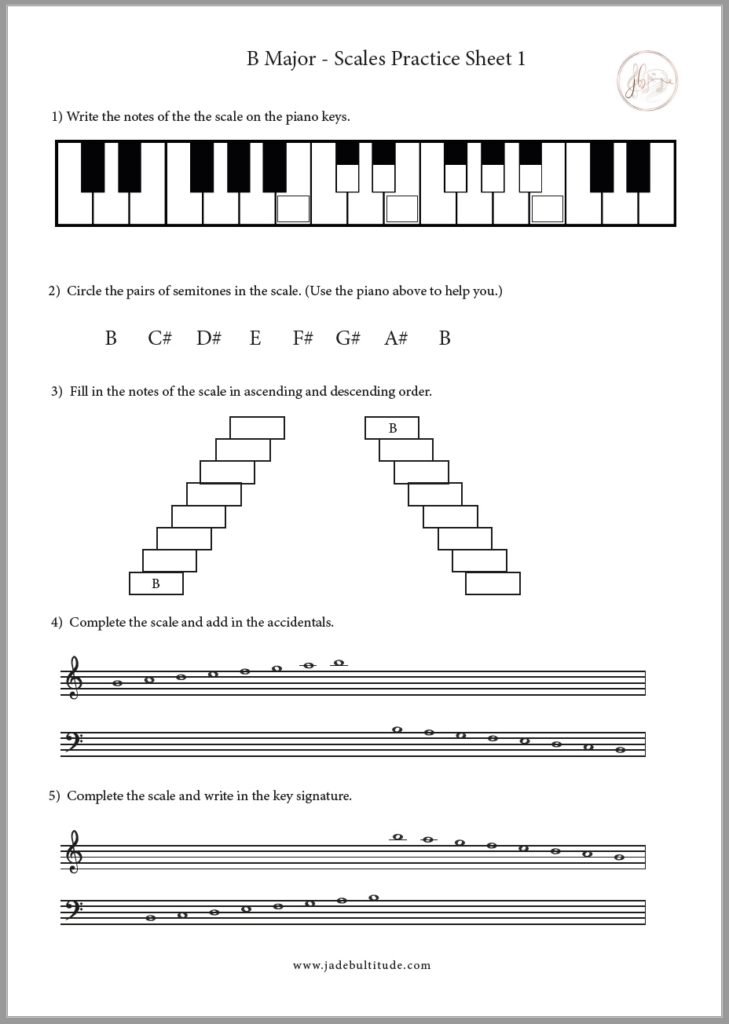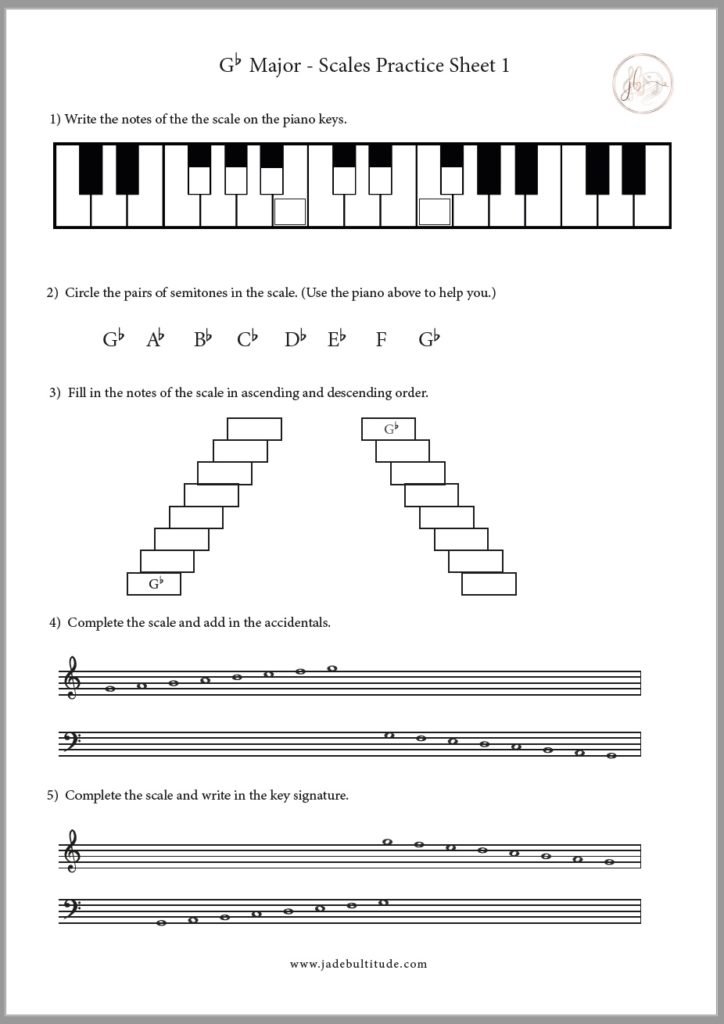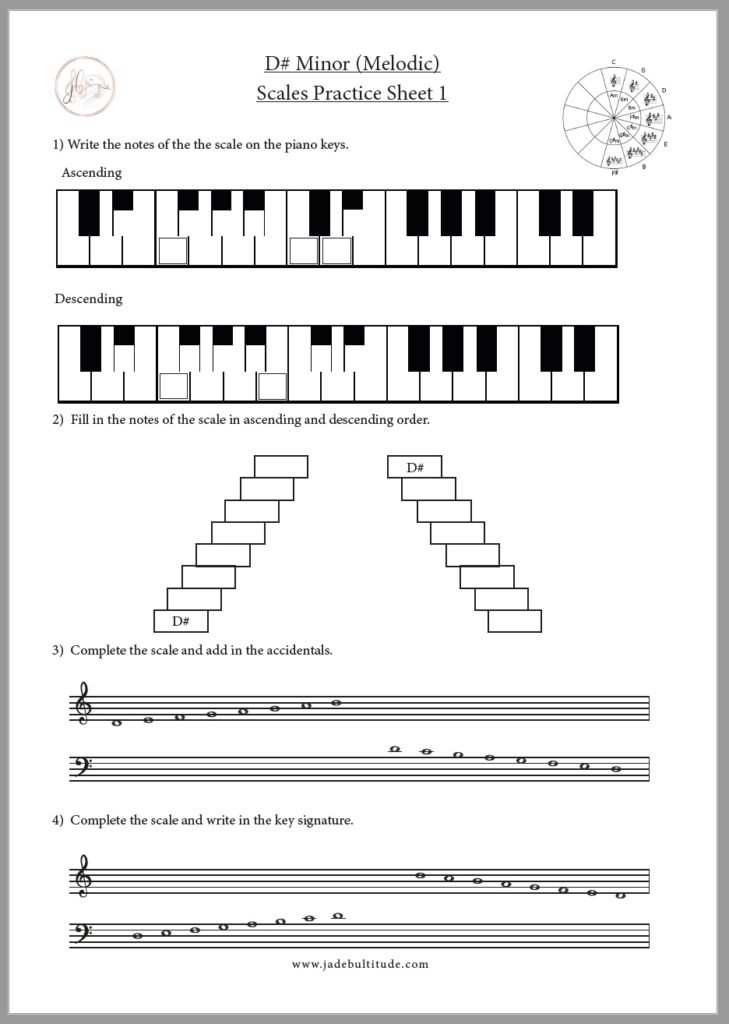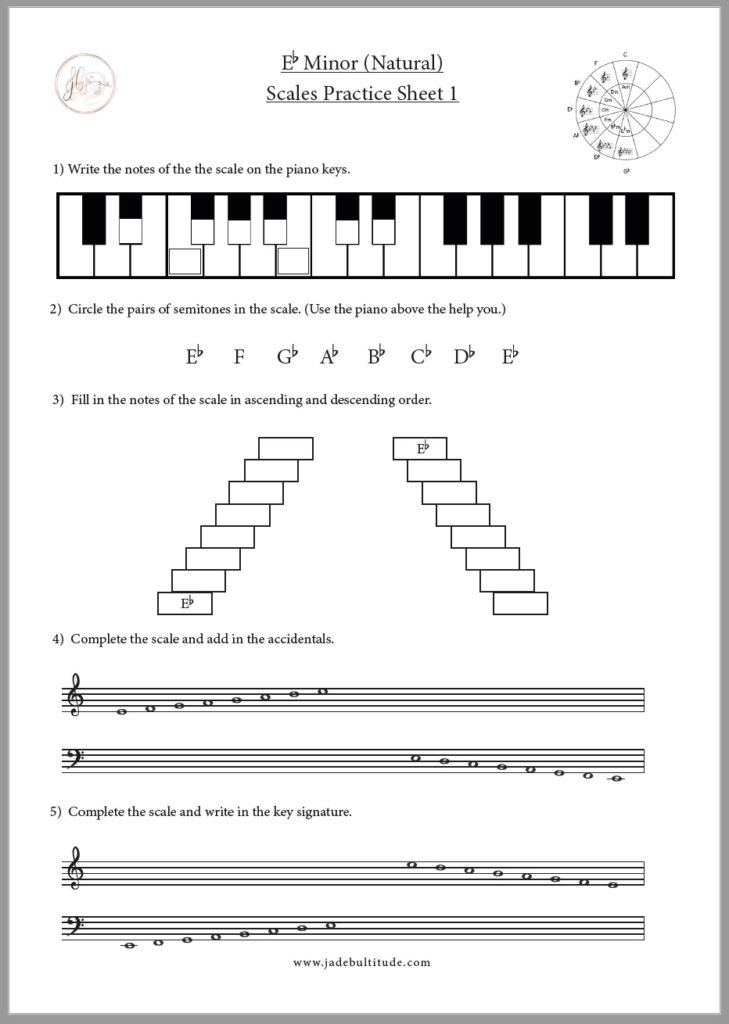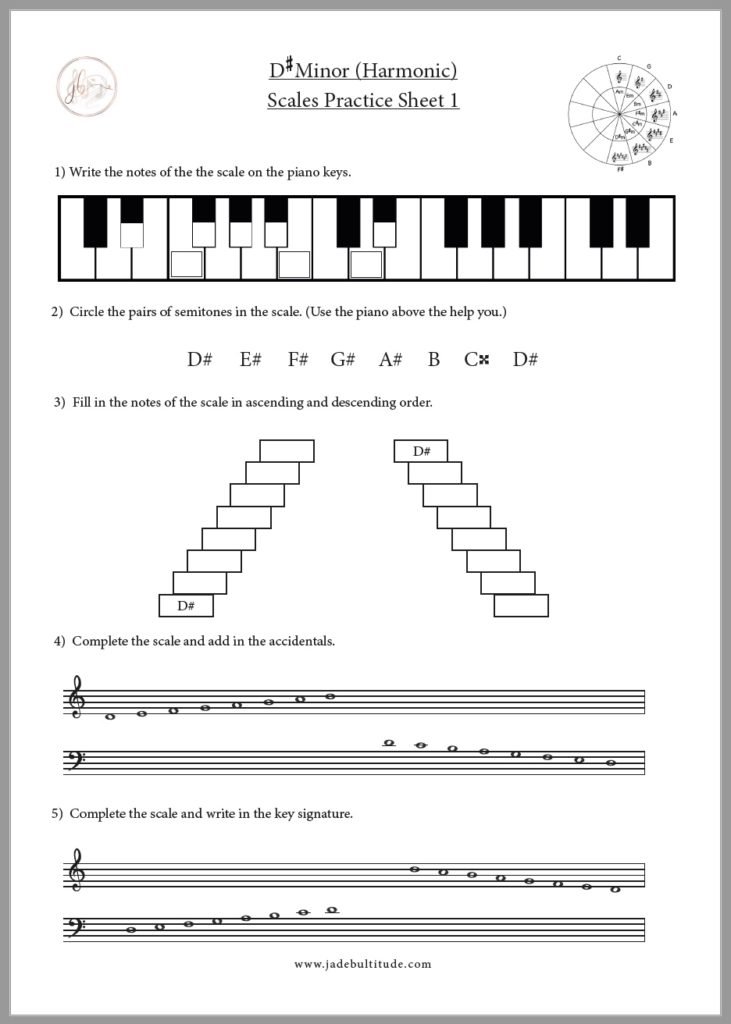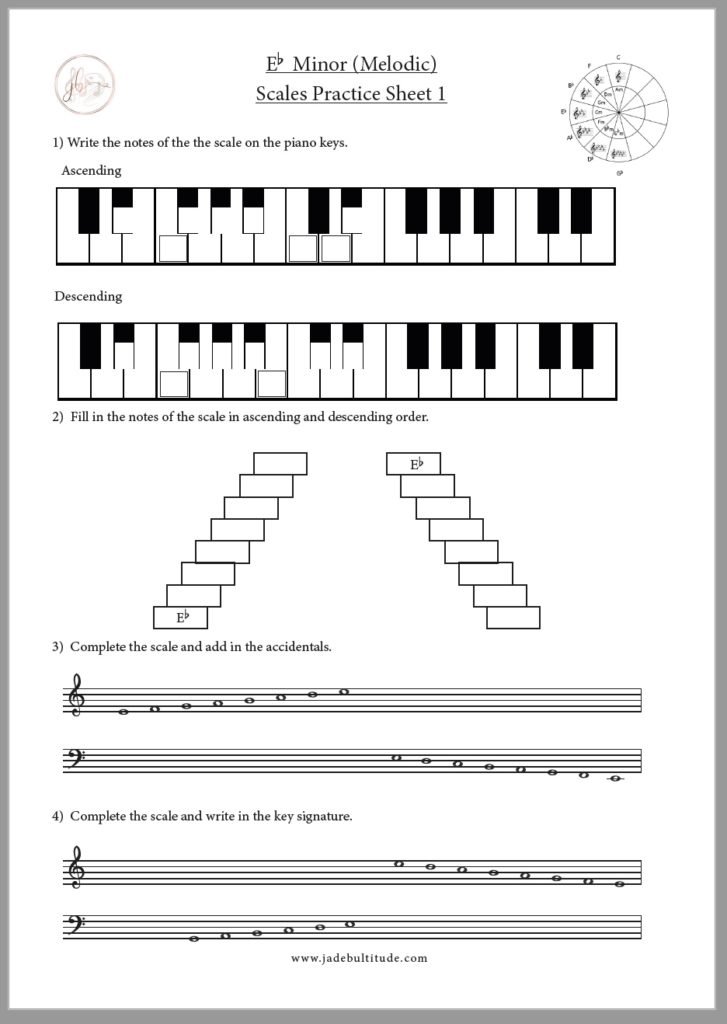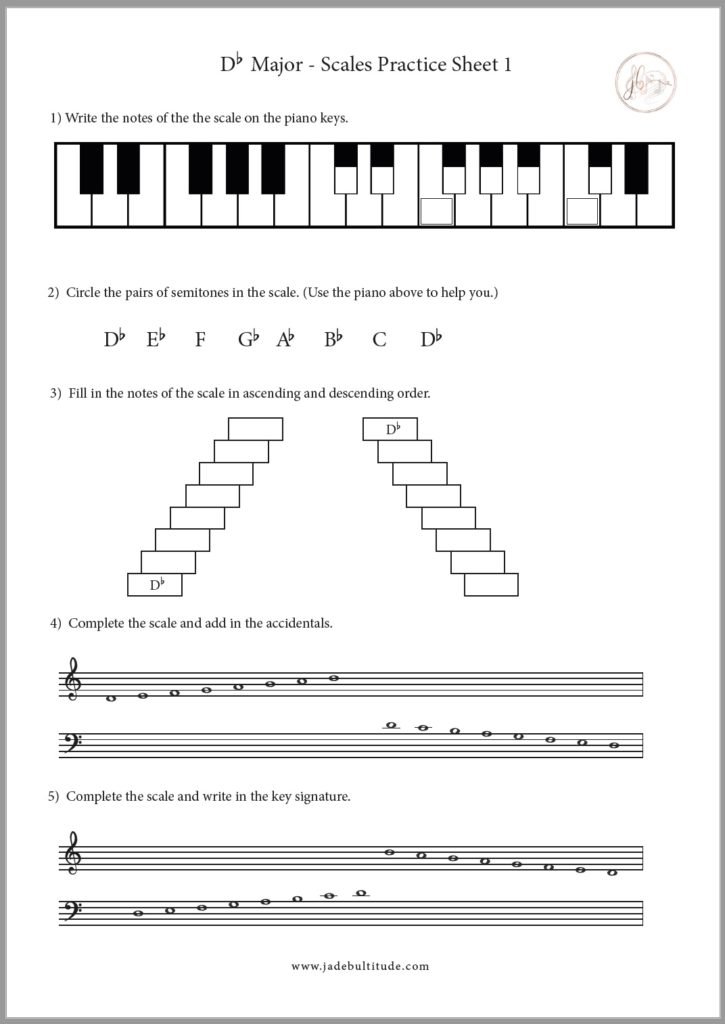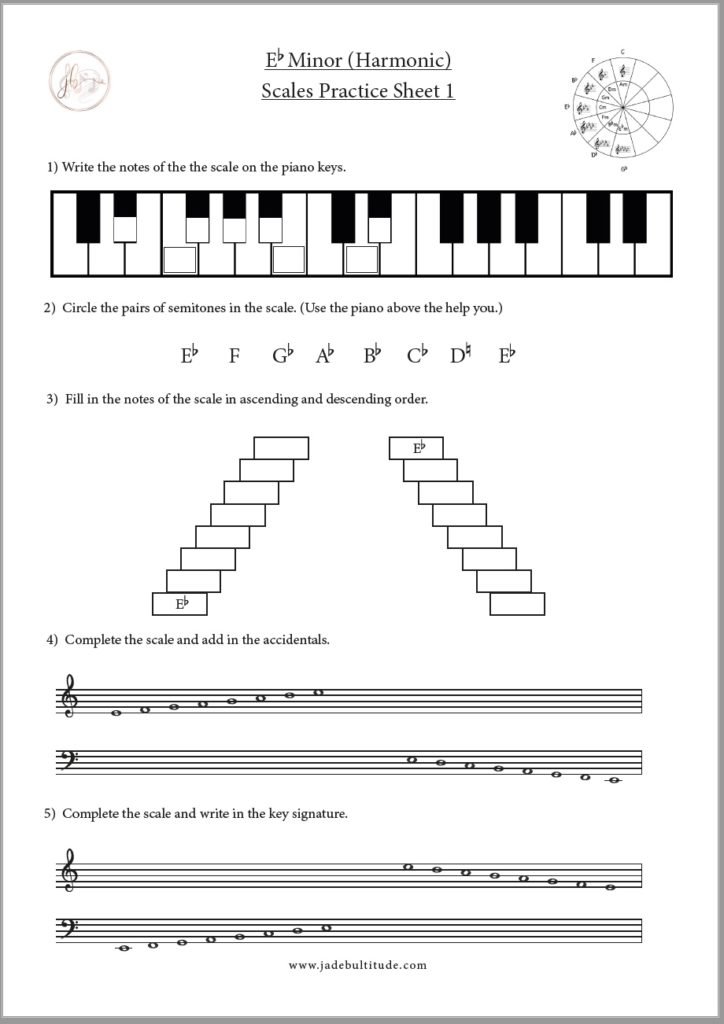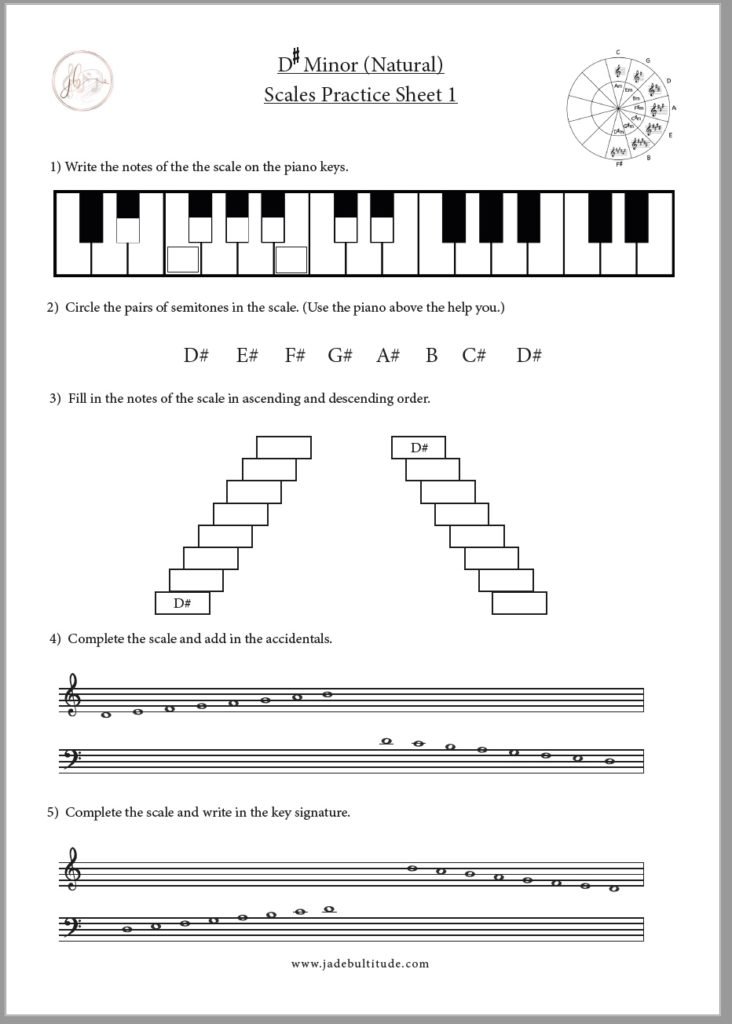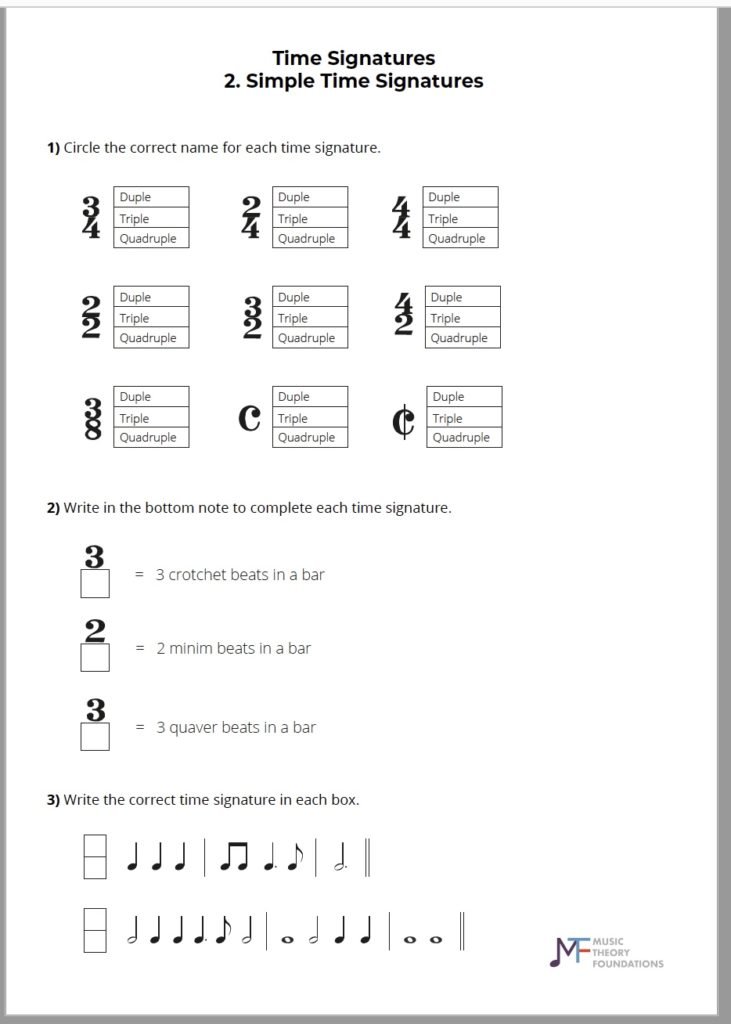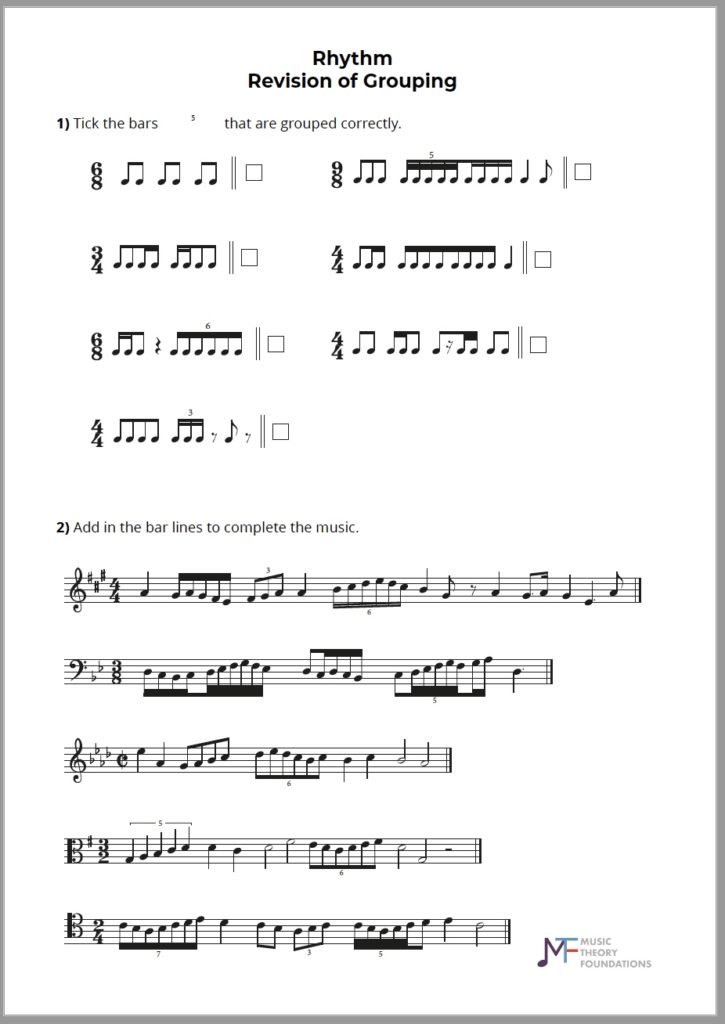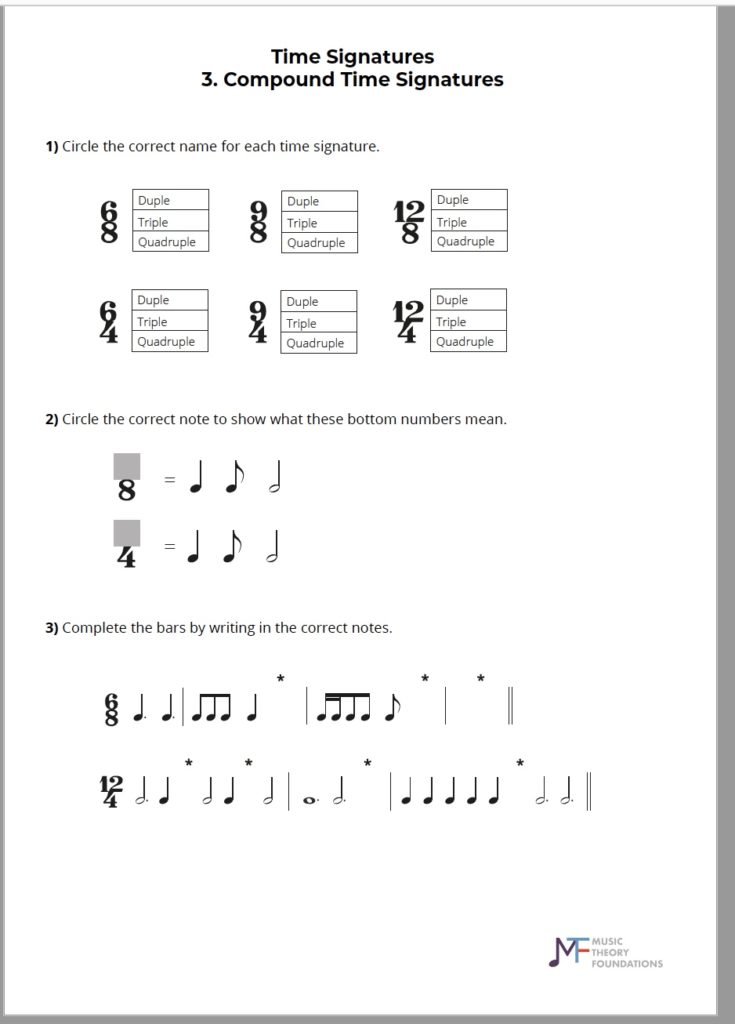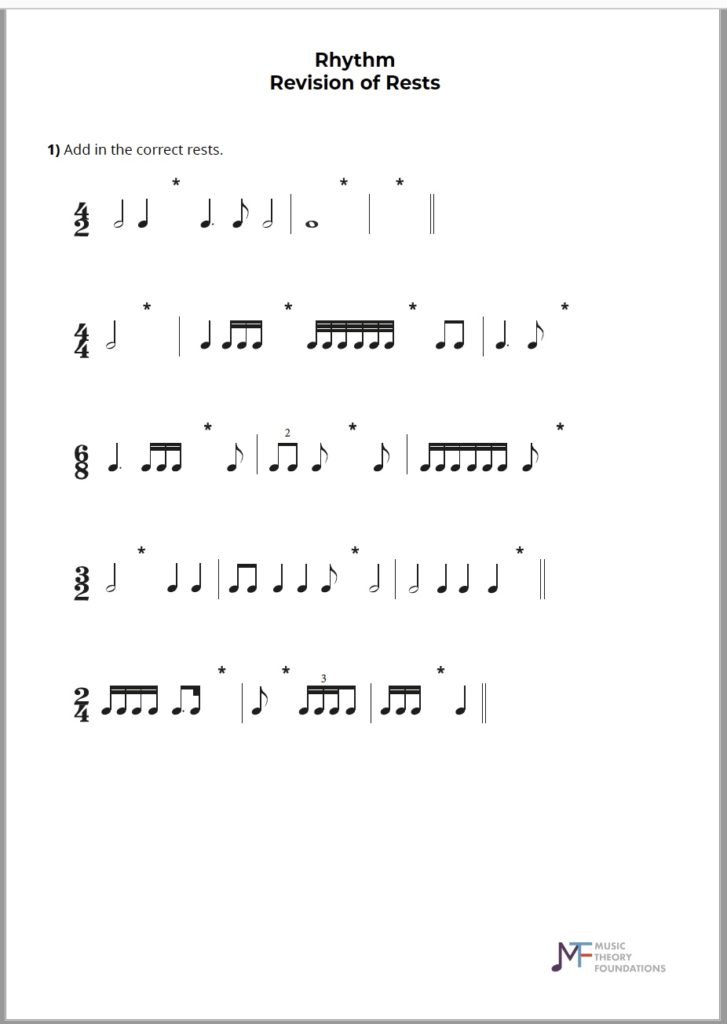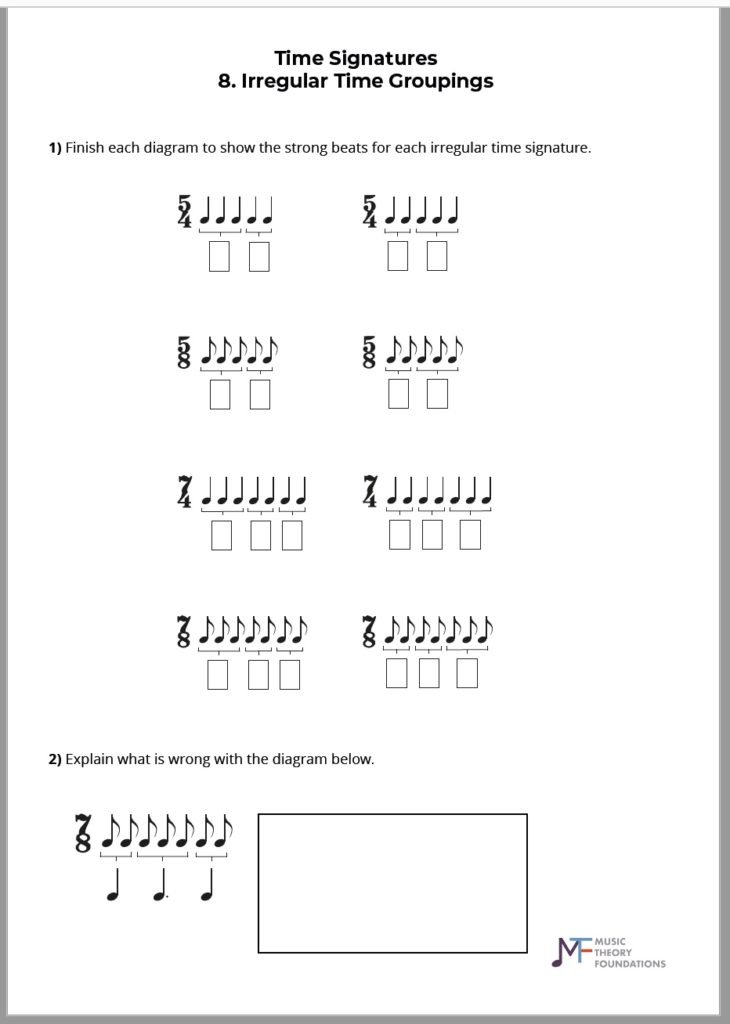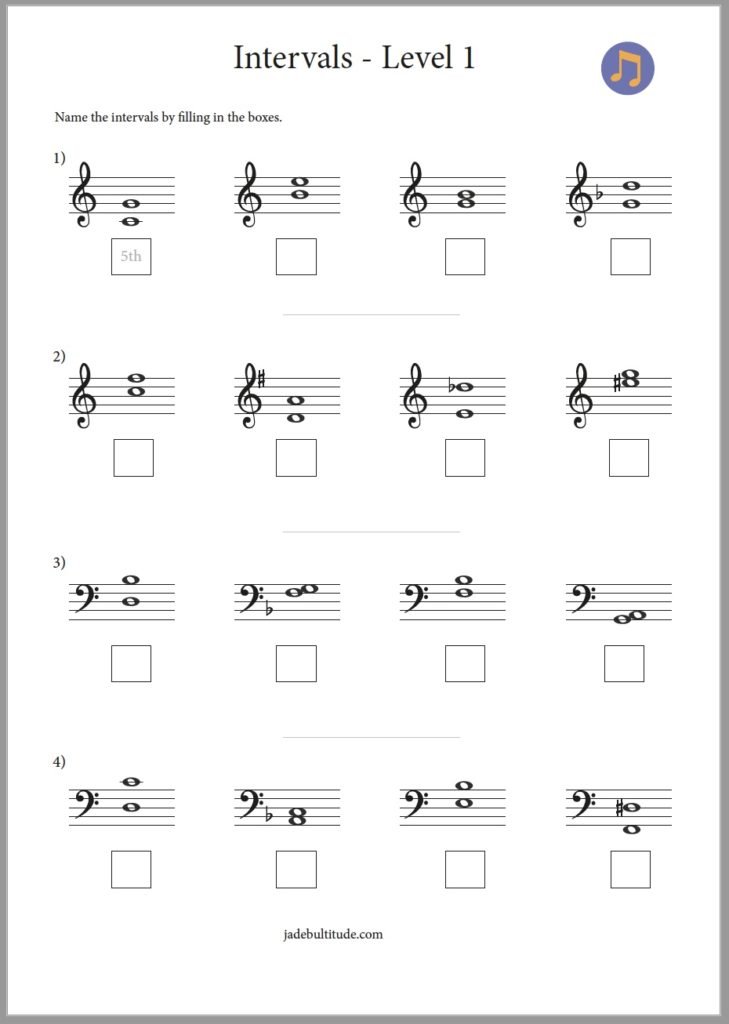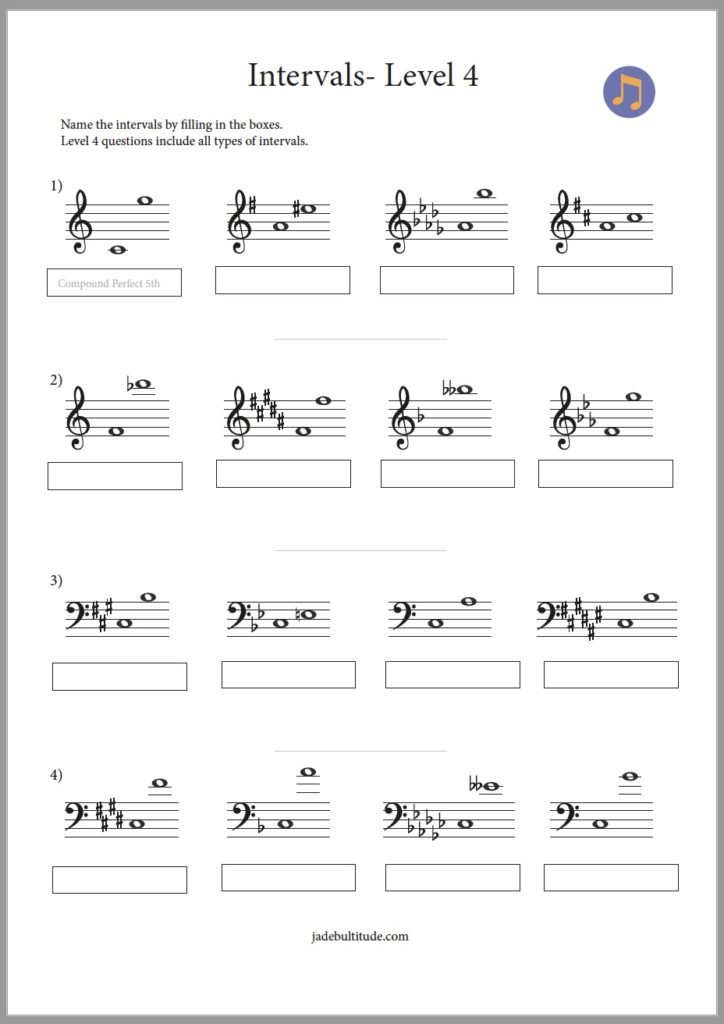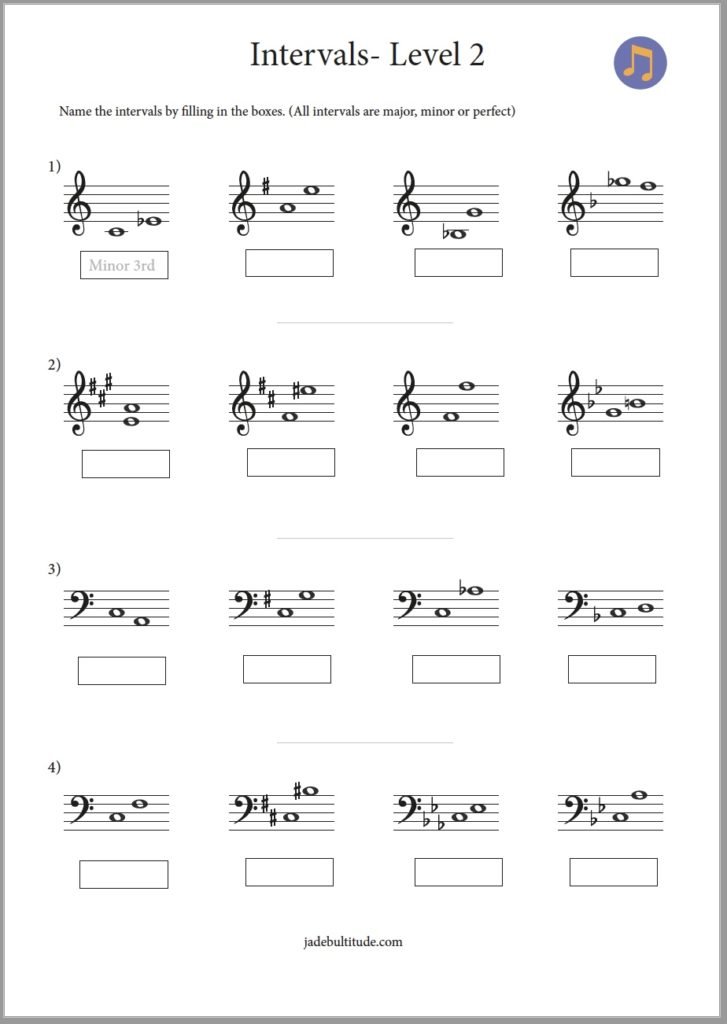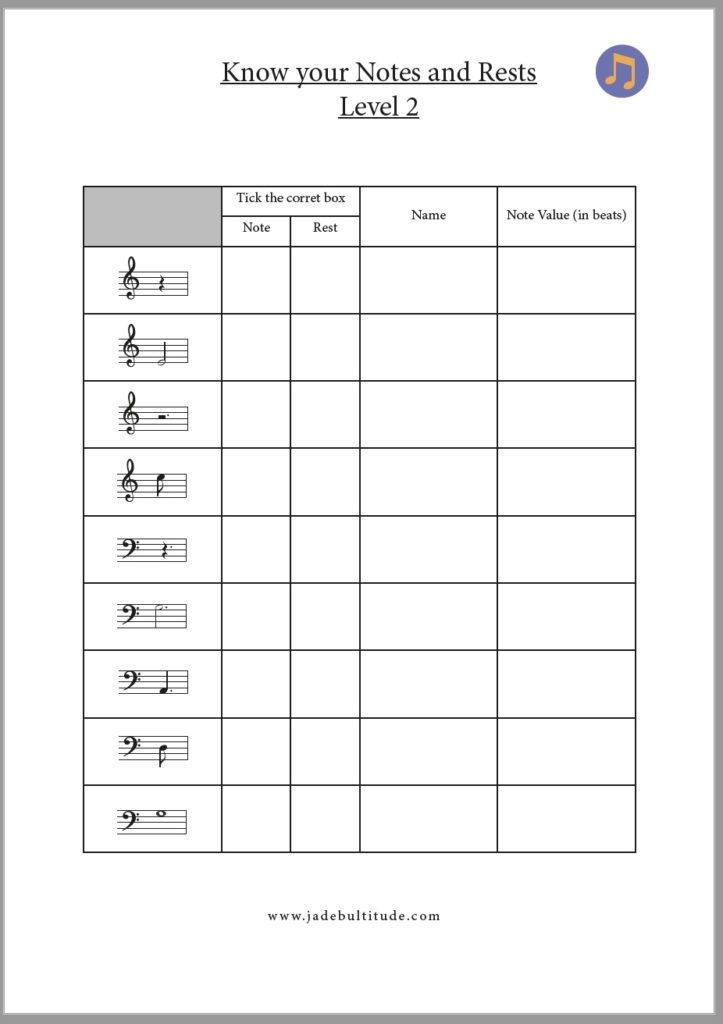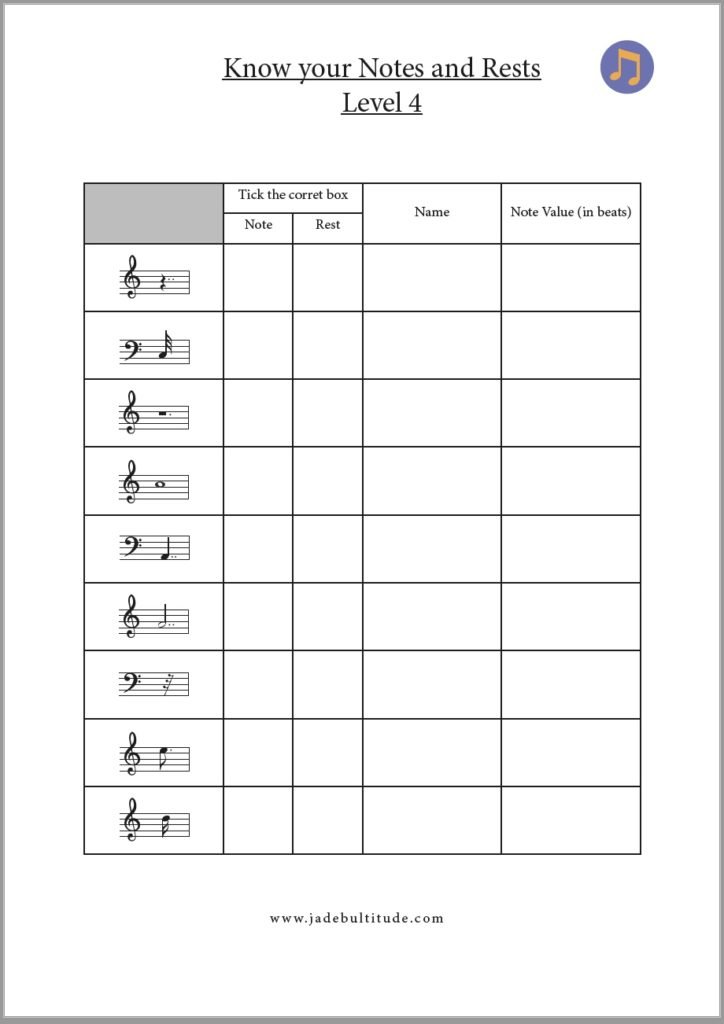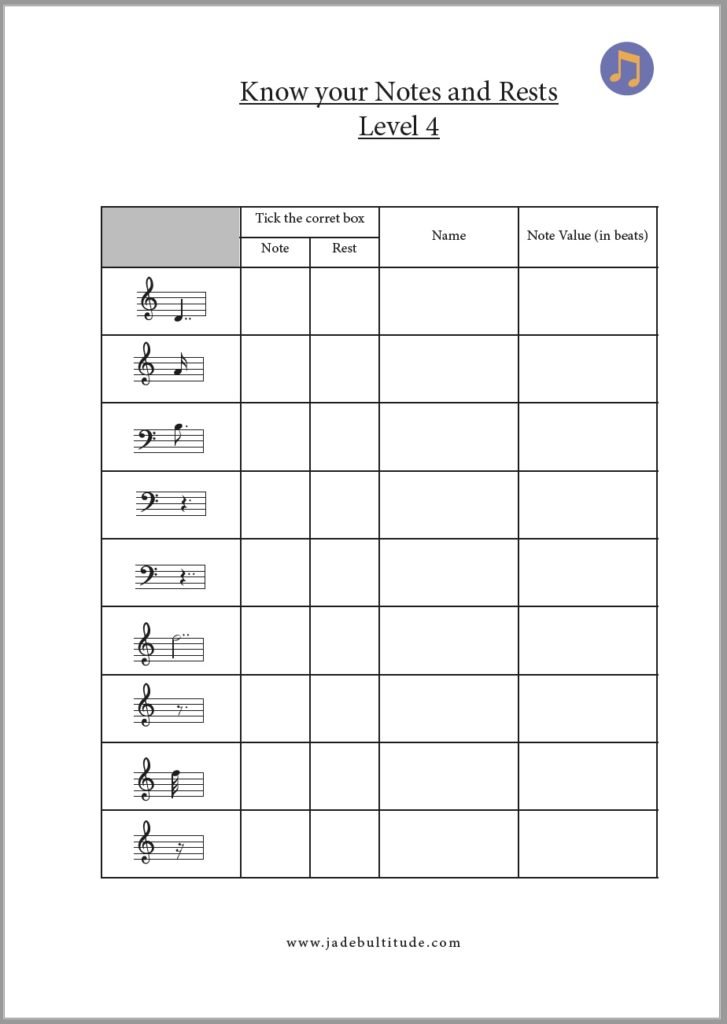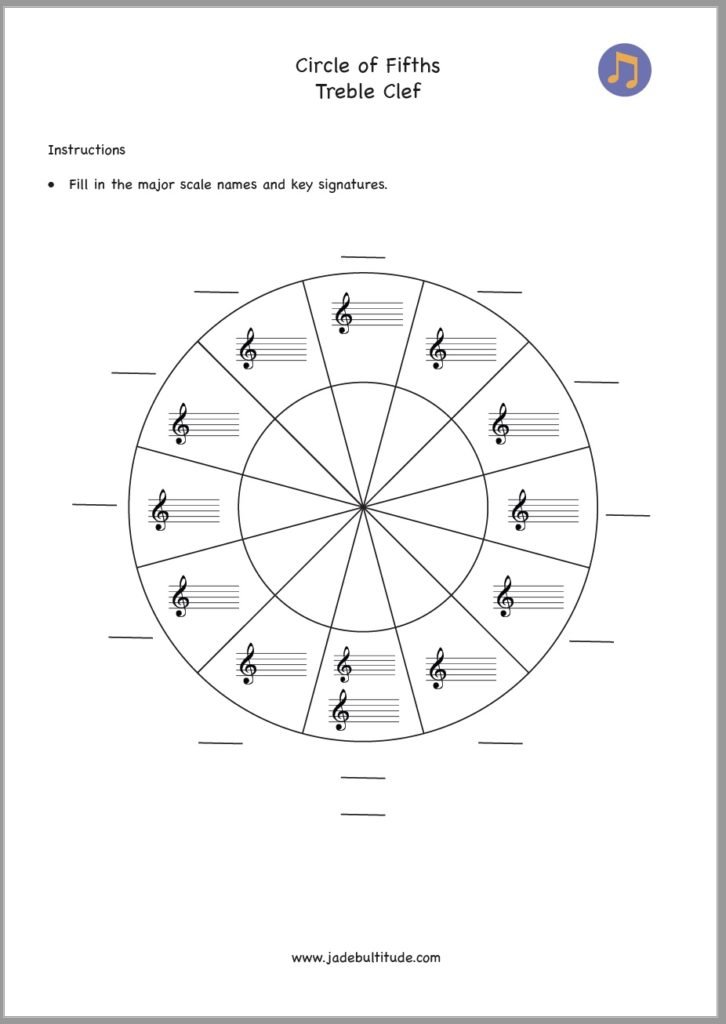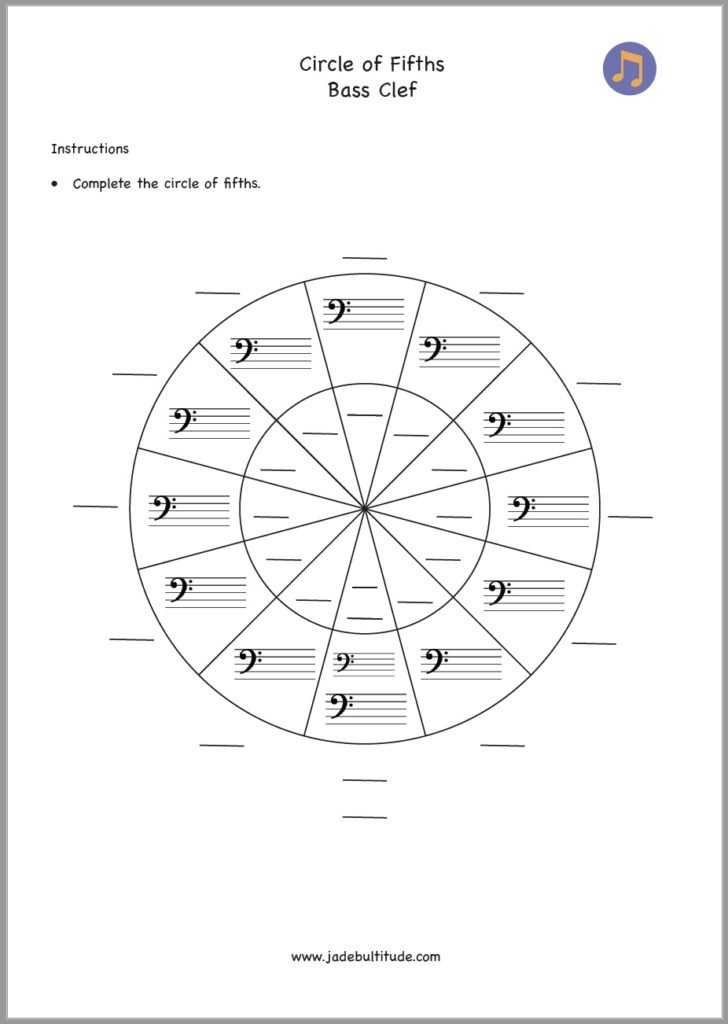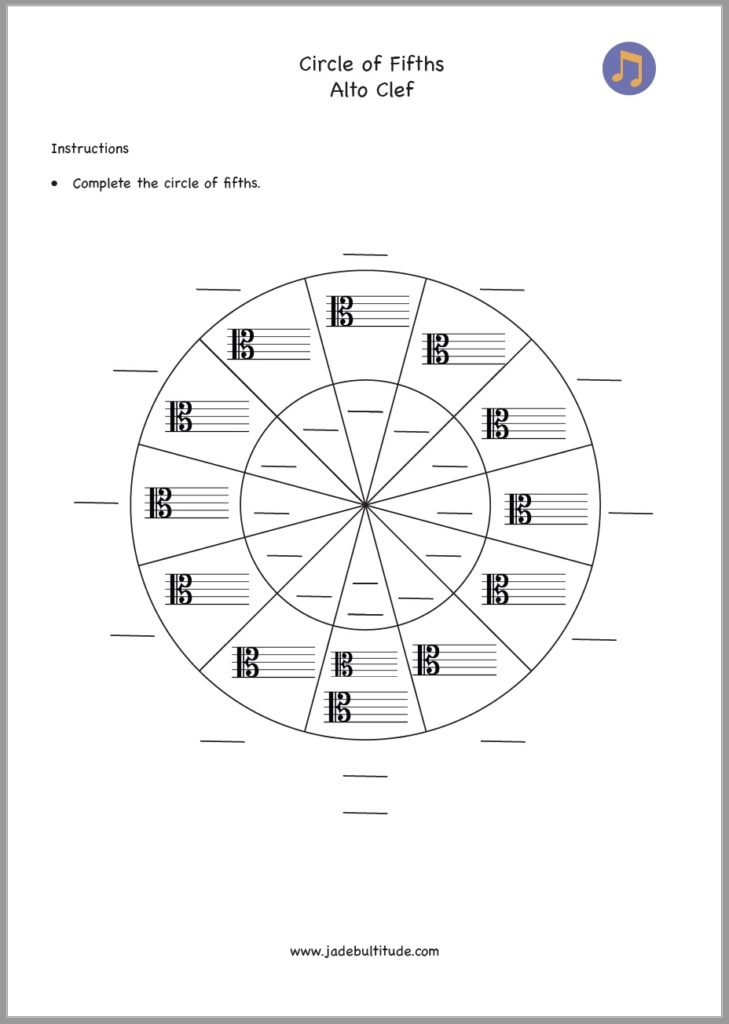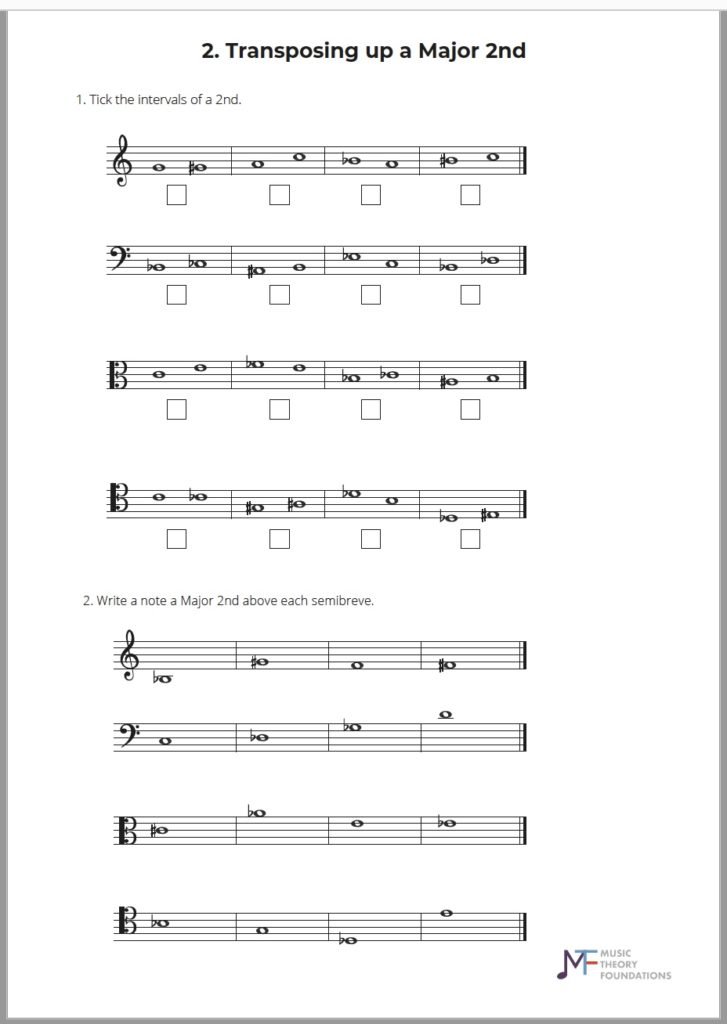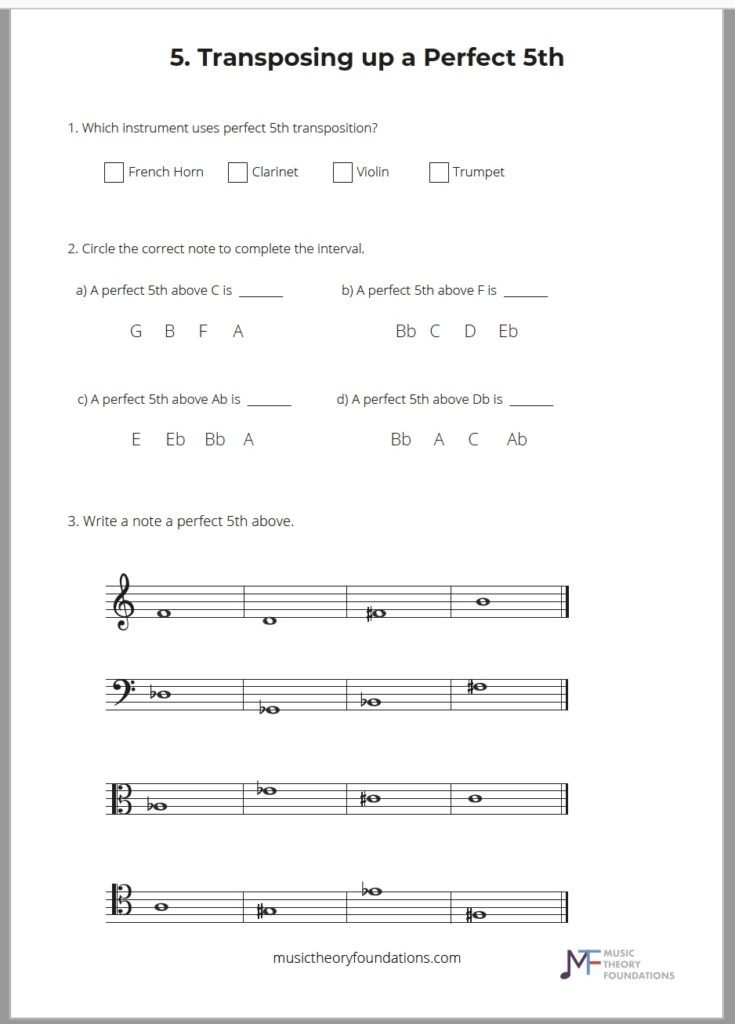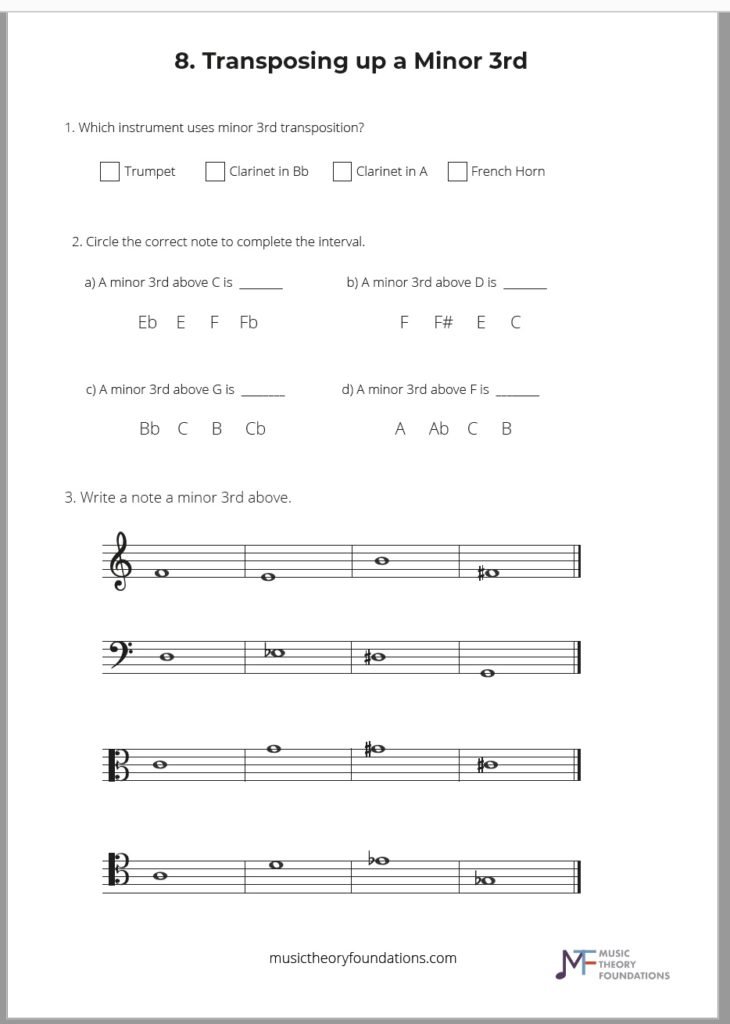We know that ABRSM Grade 5 Music Theory can be tough for many music students. As a music teacher with over 14 years experience I have help hundreds of students with this important exam. There’s a lot to learn and practice is the key if you want that all important pass, merit or distinction.
To help you on your Grade 5 journey I have collected together the best Grade 5 Music Theory Worksheets….and they are all free to download!
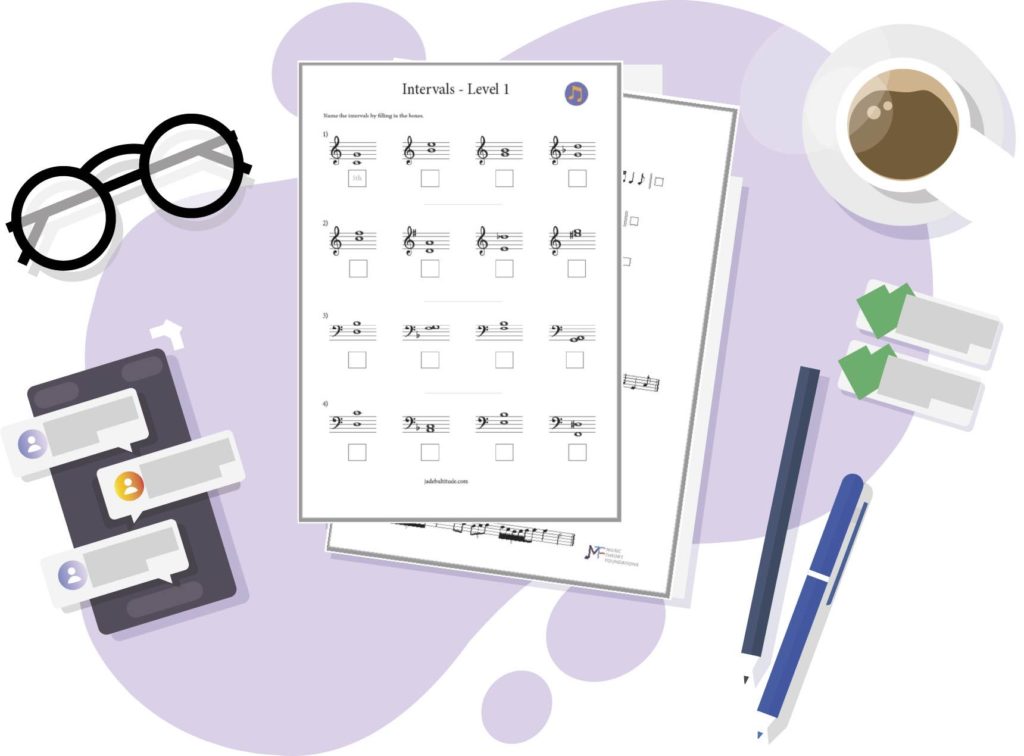
Grade 5 Music Theory Worksheets
- Scales and Key Signature Worksheets
- Time Signature Worksheets
- Interval Worksheet
- Notes and Rest Worksheets
- Circle of Fifths Worksheets
- Transposition Worksheet
- Performance Directions
Want to know everything that’s work knowing about grade 5? Great! Head over to our Grade 5 Music Theory: A Guide to Success article.
How to get the most out of Worksheets
I have found that sometimes students rush to complete activities without first fully understanding each concept. This can be frustrating for students as they don’t get many questions correct and get stuck. Instead, focus on watching a few videos or read a couple of music theory blog articles about each concept first. You might even have a music theory book that you are following.
Once you are ready try some of the questions and make sure you download the answers to check your progress in each area.
Need More support?
Sometimes it is tough to study for Grade 5 Music Theory on your own or with just a book for guidance. It can also be a challenge to fit in music theory within your instrumental lessons. Music teachers can feel pressure to focus on technique and performance, so music theory gets left out.
If you feel like you need more support, then a Grade 5 online course could be the thing you need. This can give you time to work through the material AND support to get you through those tricky concepts.
Scales and Key Signatures
Sharpen up your scales and key signatures with these activities. Remember that for this ABRSM grade you will need to name keys up to 6 sharps and flats. You also need to know major, natural minor, harmonic minor and melodic scales for each key signature.
Time Signatures
For Grade 5 you need to understand all common regular and irregular time signatures. This includes moving from simple to compound time signatures, adding in bar line and checking that note groupings are correct. Practising with these will help you ace the exam and with your sense of rhythm as a musician.
Intervals
Grade 5 intervals include major, minor, diminished and augmented intervals. You will need to be able to name these intervals within an octave and as compound intervals (intervals larger than an octave). Intervals may also have double flats and sharps in them.
Note and Rest Naming
How many demisemiquavers are in a crotchet (of sixteenth notes in a quarter note)? Sound familiar, well this is the kind of note question that you need to be able to answer in Grade 5. You will need to know all note names and note values to demisemiquavers. (Don’t forget to learn all the rests too).
Make sure you learn how to read notes in the treble clef, bass clef, alto clef and tenor clef (or ‘staff’ I you are from the US). This includes using ledger lines (I would recommend using up to three ledger lines above and below the stave). The grand stave (or grand staff) shows the treble and bass clef together and a valuable way to learn the relationship between different notes. Practice note/rest values and note naming with the activities below.
Circle of Fifths
Memorise those major and minor keys with this incredibly useful diagram. We have a complete guide to the circle of the fifths too, if you want to learn more. For Grade 5 you will want to know all of the major and minor keys. Remember that the keys more in fifths if you go round clockwise and in fourths if you move anti-clockwise. This is a great one to take into your music lesson too as it can help with recognising key signatures and relative minor keys.
Transposition
Transposition is a tough topic and you will need plenty of practice to get full marks here! Learn how to transpose a melody up or down an octave in any clef. You’ll also need knowledge of how to transpose between concert pitch and written pitch for transposing instruments. This means transposing pieces up or down a major 2nd, perfect 5th and minor 3rd.
Performance Directions
There is plenty of terminology to learn for Grade 5, especially as you will still need to know all the vocabulary for grades 1-4. Try dividing the words up into different languages to help you memorise them (French, German and Italian terms). See our Article on Performance Directions for Grade 5 for resources and a full list of performance directions.

